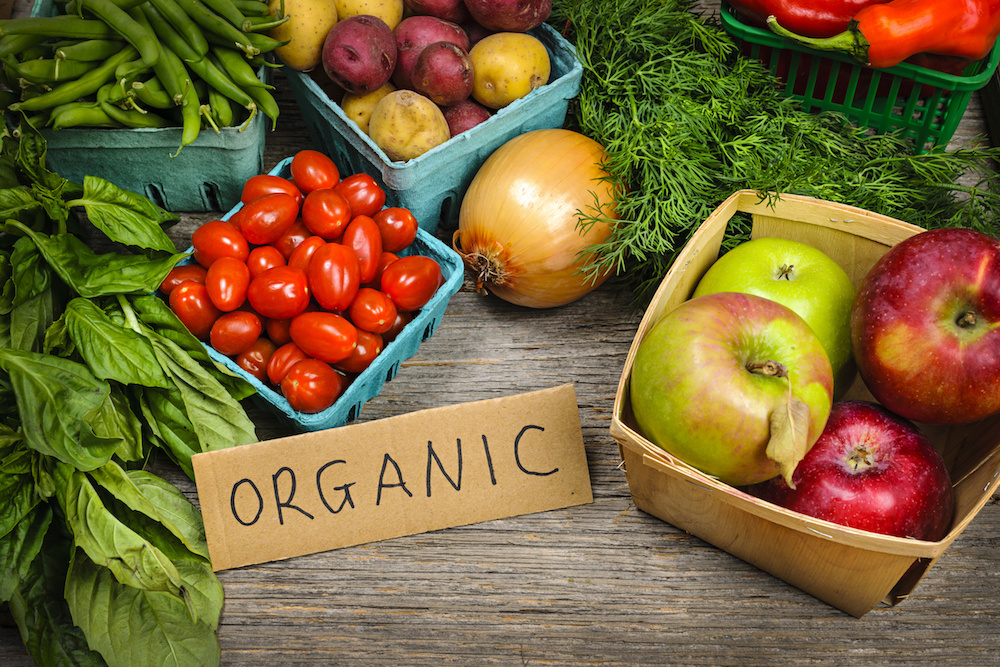A market once considered small and niche, organic produce now accounts for 2.6% of global market sales for food and beverage - a large jump from the 1.7% share it held in 2012. These gains are expected to continue, with global organic food and beverages sales slated to reach 323.56 billion USD by 2024.
While high-income shoppers and millenials are considered the main demographic drivers behind organic food growth, organic spending is increasing among all income levels and ages. The expectation that organic food will be present in all channels, not just specialty and health food stores, are also rising.
Organic berries, mushrooms, and peppers have experienced double-digit growth rates each of the past three years. As of this year; packaged salads are the number-one selling organic item, followed by apples, carrots, herbs, spices, berries, bananas, tomatoes, head lettuce, and potatoes.
Achieving Organic Certification
Growers need to check with their jurisdiction to find their local organic standards and applicable certification bodies. Often organic standards will comprise of production practice standards and permitted substances lists.
In most cases, applicants will need to be following these standards for 36 months before they can sell their produce as organic. This is known as the "3-year waiting period". (They can still sell their produce before this point, but they must keep the conventional labelling until they reach 36 months/3 years).
Land that has had no prohibited substances applied in the last 36 months can be certified without further transition time, provided there are records to substantiate this claim.
During the transition period and after they are certified, growers must keep records to prove that no prohibited substances were used.
Growers who plan on growing conventional produce simultaneously should note that many jurisdictions do not allow for the production of visually identical non-perennial crops even during the transition process. A separate legal entity (company) can be created for the organic production, but all records and transactions must be maintained separately by that legal entity.
If you intend to continue producing some crops or products conventionally as you transition others to organic, you should be aware that the production of visually identical non-perennial crops as organic and non-organic even during the transition process is not allowed within the current standards. The two crops must be visually distinct from one another.
Buffer zones must exist between organic and non-organic production areas to help ensure the integrity of the organic products. Growers need to check with their jurisdiction for the dimensions of these buffer zones.
Production plans or organic system plans are required by certifications body applications, and are also a great way to start getting organized. These plans can include input documentation, seed sources, a 5-year field history, harvest records, storage or inventory records, sales invoices, bills of lading (BOLs), and lot numbers.
The final step is to undergo initial and follow-up certification inspections. If growers are successful, organic production and the booming market therein is within their grasp.

How Croptracker Can Help
Our crop management software helps make achieving and maintaining organic certification easy. With Croptracker, growers can:
• Prepare detailed and accurate spray records that organic bodies will review during the certification process and during inspections
• Store records so that they are easily-accessible for surprise inspections
• Use spray records to show that no non-permitted substances were applied to organic blocks or blocks applying for organic certification
• Use spray records to substantiate claim that non-permitted substances were not applied in last 36 months, allowing eligible growers to skip the 3-year waiting period.
• Use labour records to demonstrate that workers did not conduct production practices in organic blocks immediately after applying chemicals in non-organic blocks, thereby increasing the risk of contamination
• Use packing records to show that organic produce was packaged in organic-labelled packaging and conventional produce in conventionally-labelled packaging
• Use packing records to show that the produce from your organic buffer area are packaged and labelled as conventional produce, not organic produce
Need a refresher on any of Croptracker's features? Head over to our Knowledge Base, where you'll find step-by-step tutorials as well as common troubleshooting tips and more. And as always, if you're ever stuck, never hesitate to e-mail us at support@croptracker.com or Live Chat with us by clicking the green speech bubble ![]() in your bottom right-hand corner. We're always happy to help you let Croptracker make your farm become more efficient, safe, and profitable!
in your bottom right-hand corner. We're always happy to help you let Croptracker make your farm become more efficient, safe, and profitable!
| Missed Last Week's Blog Post? Australian Consumers Undaunted in Face of Food Terrorism |


